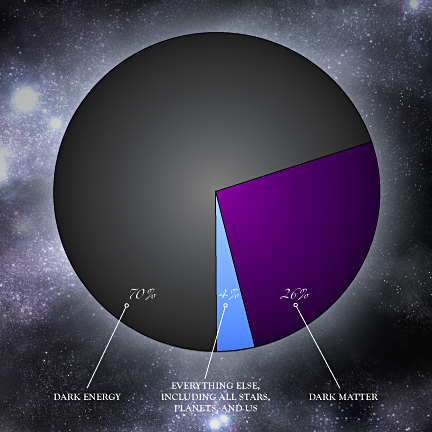On the Dark Side (Part I)
When you look up at the night sky, you see a lot of things glowing like stars, planets, and galaxies. So it might sound strange to hear that most of the Universe is actually dark. The truth is the protons, neutrons and electrons that make up everything we can see - and that means with every telescopes we've got -- accounts for only about 4% of the mass and energy of the Universe. The rest is dark and mysterious. More specifically, about 70% of the Universe is what is known as dark energy; about 26% is so-called dark matter.
The tricky part about this dark Universe is that astronomers can't directly see any of it. They can only witness the effects these strange substances have on the material around it through gravity.
Fortunately, modern day astronomers have developed many tactics to explore the dark Universe, including using telescopes like Chandra. Let's start with dark matter.
Scientists have known about dark matter for decades, but are still struggling to figure out what it is. We know some things about it: it acts like regular matter when it comes to gravity. But, unlike normal matter, dark matter emits no light. Because of this, we know that it has to be very different from the stuff found in stars and planets and us.
One way we can try to learn more about dark matter is to study clusters of galaxies. In fact, galaxy clusters gave the first evidence for the existence of dark matter back in the 1930s. The galaxies in galaxy clusters are moving around so quickly that there has to be a lot of extra matter - invisible matter - in clusters to hold them together with their gravity. It turns out that most of the normal matter in galaxy clusters is hot gas that can only be seen with an X-ray telescope like Chandra. This hot gas wasn't visible with optical telescopes back in the 1930s. But, there's still not enough mass in this hot gas to hold all the normal matter together. So, that’s when astronomers came up with dark matter.
Next time, we’ll look at another member of the “dark universeâ€: the even more mysterious dark energy. Read Part II
-Megan Watzke & Peter Edmonds, CXC
Please note this is a moderated blog. No pornography, spam, profanity or discriminatory remarks are allowed. No personal attacks are allowed. Users should stay on topic to keep it relevant for the readers.
Read the privacy statement

